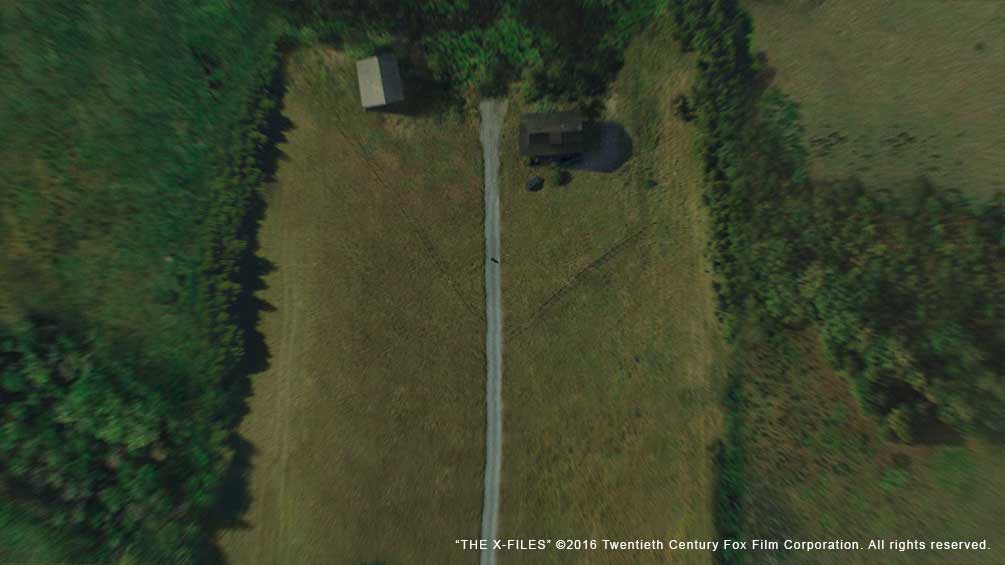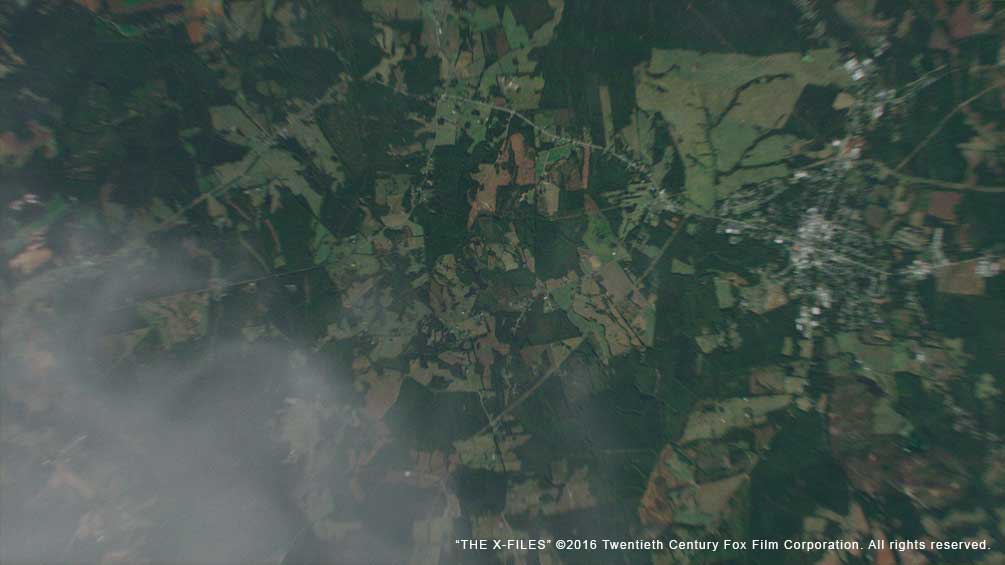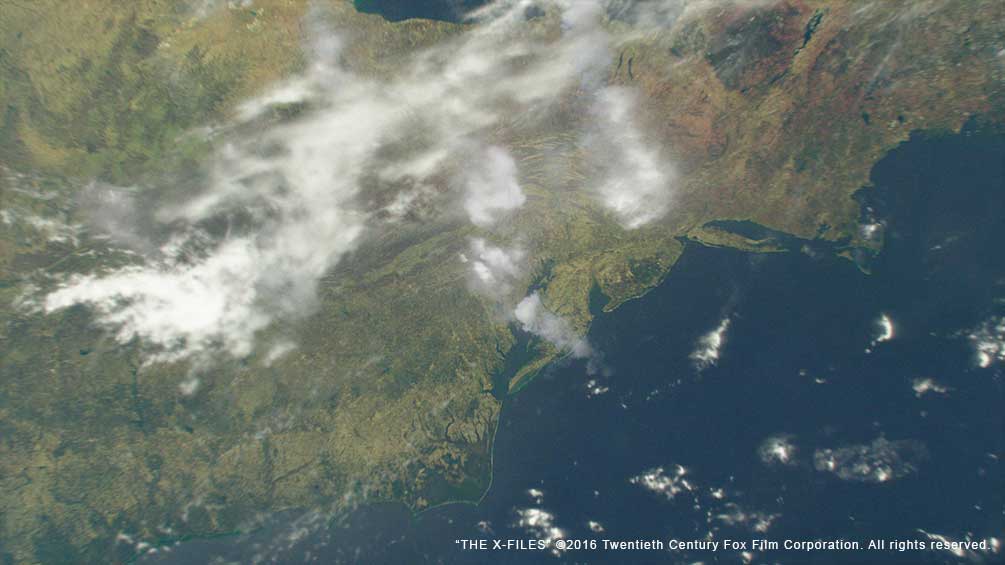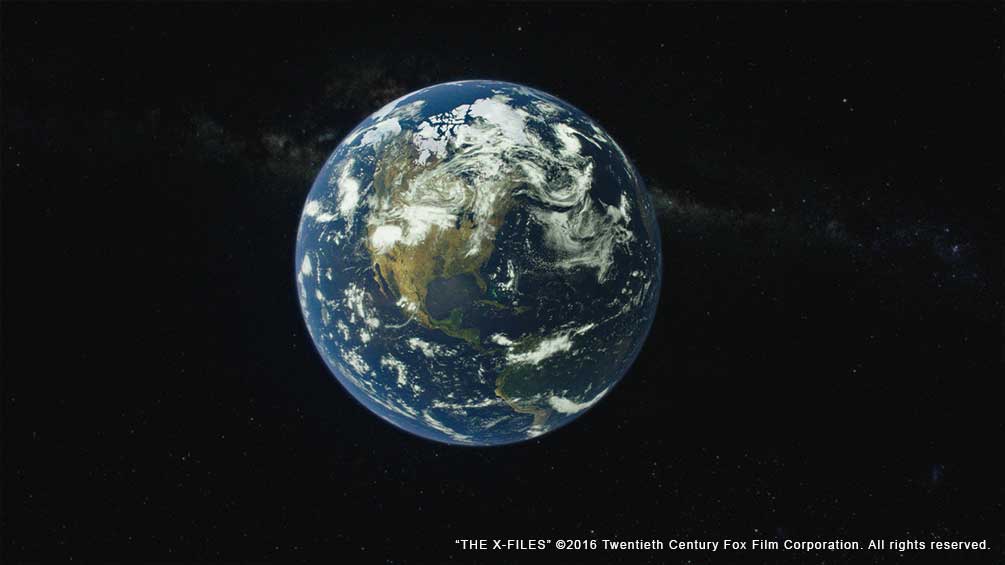The X-Files: Season 10 Case Study

Case Study
One of the biggest shows in sci-fi history returned to small screens in early 2016, thrilling diehard Mulder & Scully fans the world over. Image Engine was brought on board to create the otherworldly entities encountered by the FBI’s most tenacious agents. The truth is…below this introduction.
Following a mammoth 14-year break, The X-Files finally returned to small screens across the globe in January 2016. While the homecoming of conspiracy theorists/FBI investigators Fox Mulder and Dana Scully was the cause of much rejoicing, their lengthy absence meant that the cult sci-fi show needed to come back with a bang.
That meant feature-quality visuals delivered to a mini-series timeline. With experience on shows such as Game of Thrones under its belt, Image Engine was more than up to the task.
Visual effects supervisor Mat Krentz, CG supervisor Edmond Engelbrecht, and visual effects associate producer Cara Davies oversaw work across the series, starting with episode one…
We want to believe
In the very first episode a circular UFO violently crash-lands into the bank of a flowing river, kicking buckets of dirt into the air.
“This is The X-Files; it’s all about that extra-terrestrial element, so this sequence needed to look and feel incredibly real,” begins Davies. “The audience had been away from The X-Files for a really long time, so we needed bring them straight back into that universe, captivating them from the get-go.”
A practical model of the circular spacecraft was built for use on the set. The Image Engine team used blueprints of the practical craft as reference, matching their digital model to its specifications.
“We went through a number of passes for the animation, exploring different ways that the UFO might crash,” explains Krentz. For real-world reference, Image Engine examined controlled landings of airplanes, and developed the sequence around that.
“You don’t want the ship to look like it’s being forced into a perfect crash landing, and you don’t want to make it look like it has no weight – it needs to feel like a physical object,” says Krentz. “Getting that rights takes communication, collaboration and numerous iterations.”
Once the animation was locked down, Image Engine moved on to the shower of dirt and rock that emanates from the craft’s contact with terra firma.
“We were very particular about the way the dust interacted with the ship, and how heavily the UFO dug into the ground,” says Davies. “We had a layer of grass, dirt, rock and more underneath that. We deep composited each of these elements together, ccontrolled the depth of each element in NUKE and then layered atmosphere over the top of the debris.”
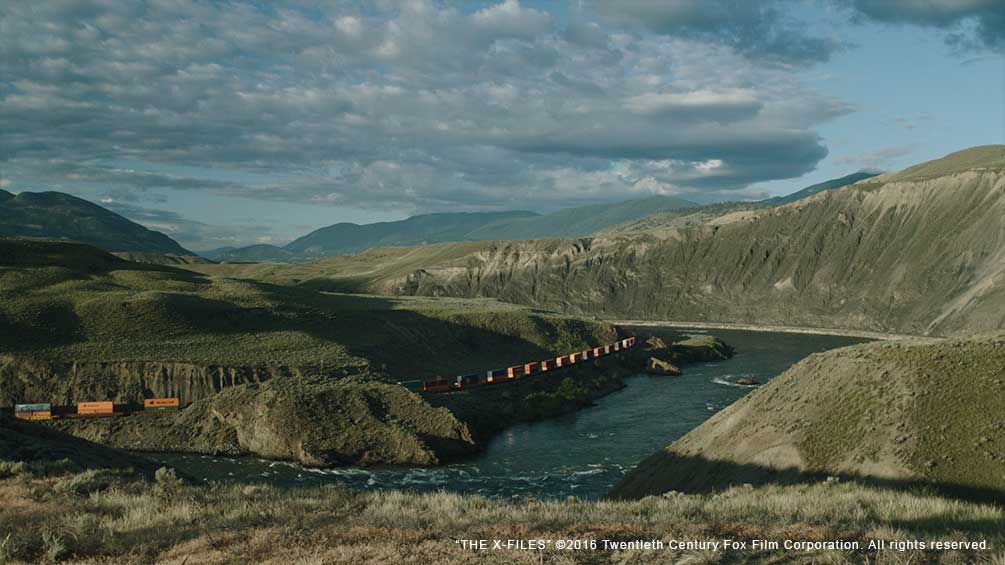
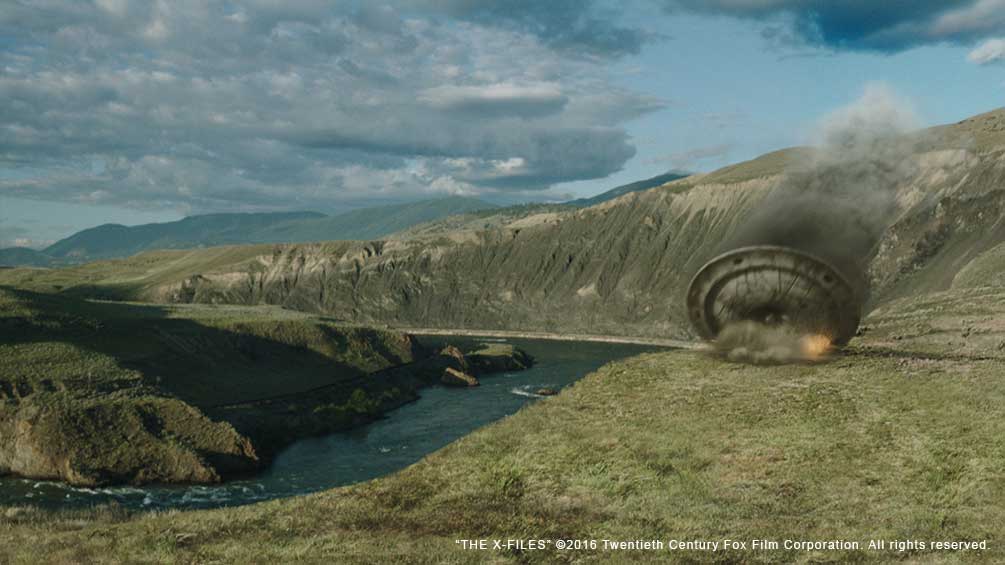
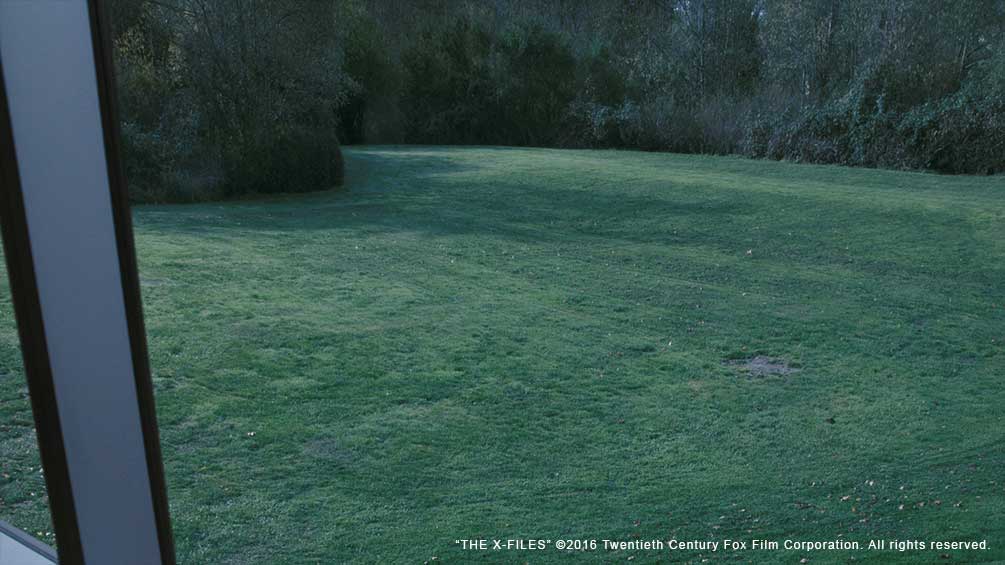
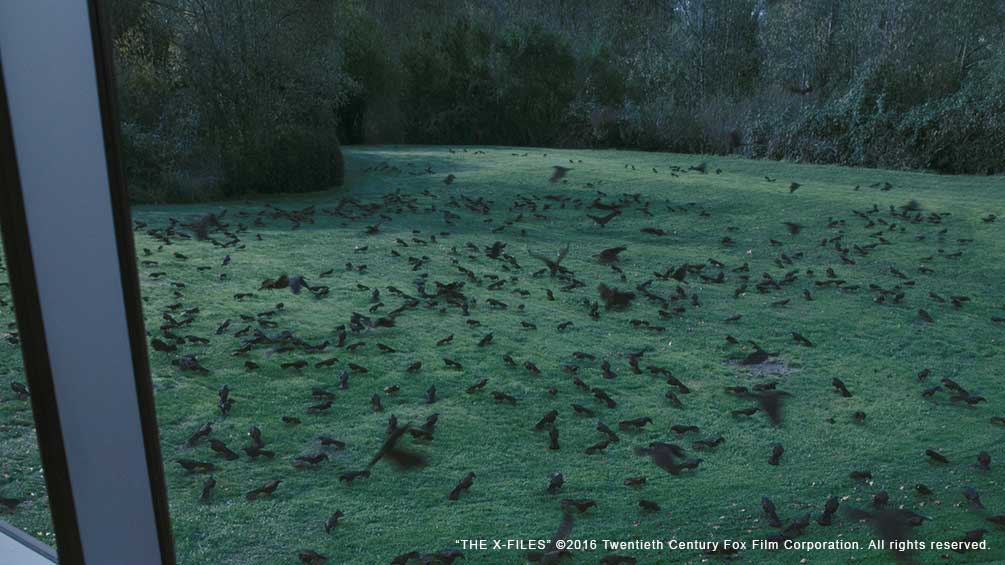
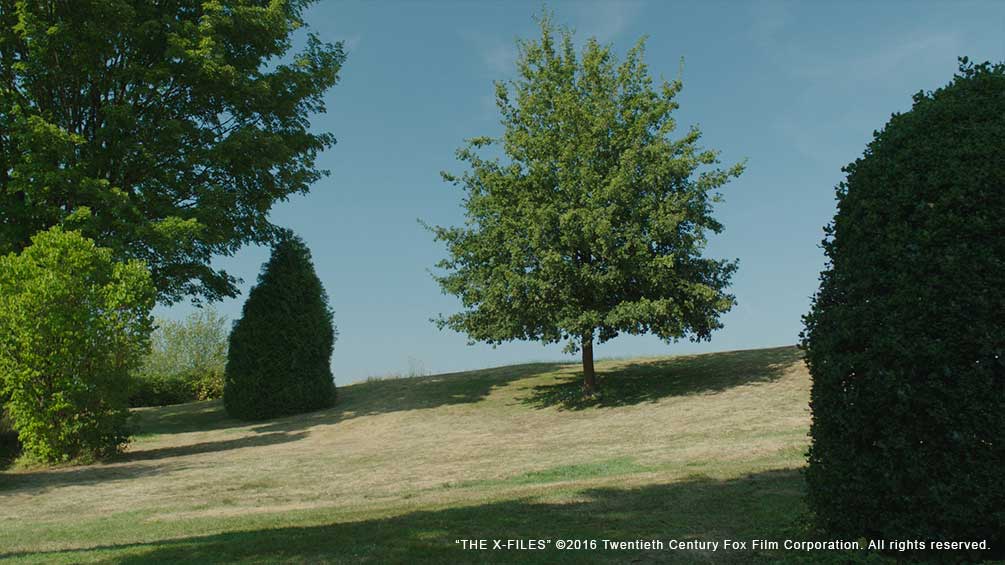

Creature discomforts
From the spaceships they pilot to the beings themselves, X-Files is all about the existence of extraterrestrial life forms. Given Image Engine’s work on otherworldly creatures in the past – from the prawns of District 9 or the deados of R.I.P.D. – the studio was well placed to help bring these large-eyed aliens to life.
“The production initially filmed a very petite woman in an alien suit on set, but series creator Chris Carter wanted a more stylised, traditional alien head with big, black eyes,” explains Engelbrecht.
Image Engine performed a full replacement of the actor’s head with that of a CG ‘gray alien’ head.
“We did that for 10 shots across the episode,” notes Engelbrecht. “Each time it required a full match-move for the head and then a post animation pass, with the mouth and nose moving as the creature exhaled. Later in the season there was also an autopsy scene where we had to match some blood on the alien head replacement.”
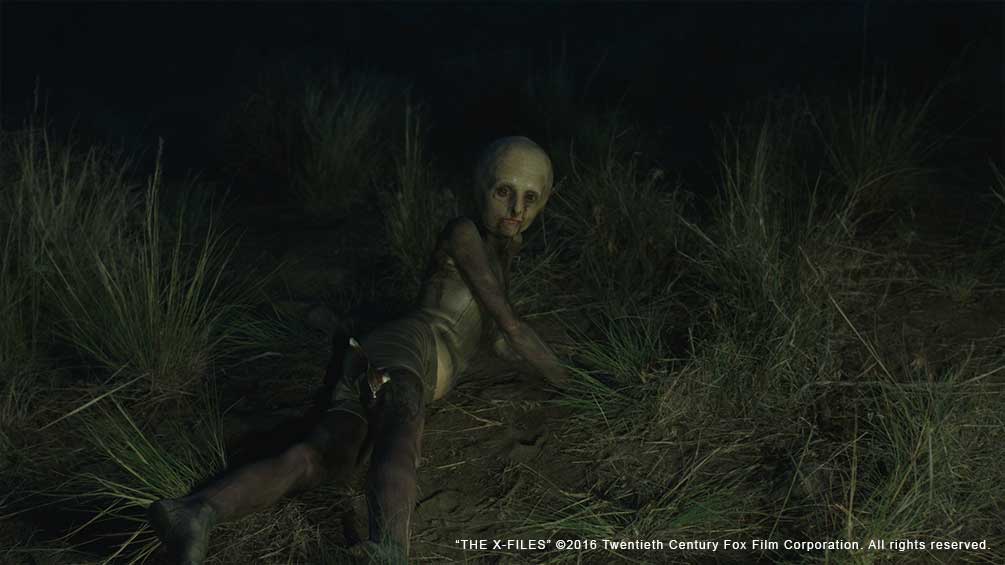
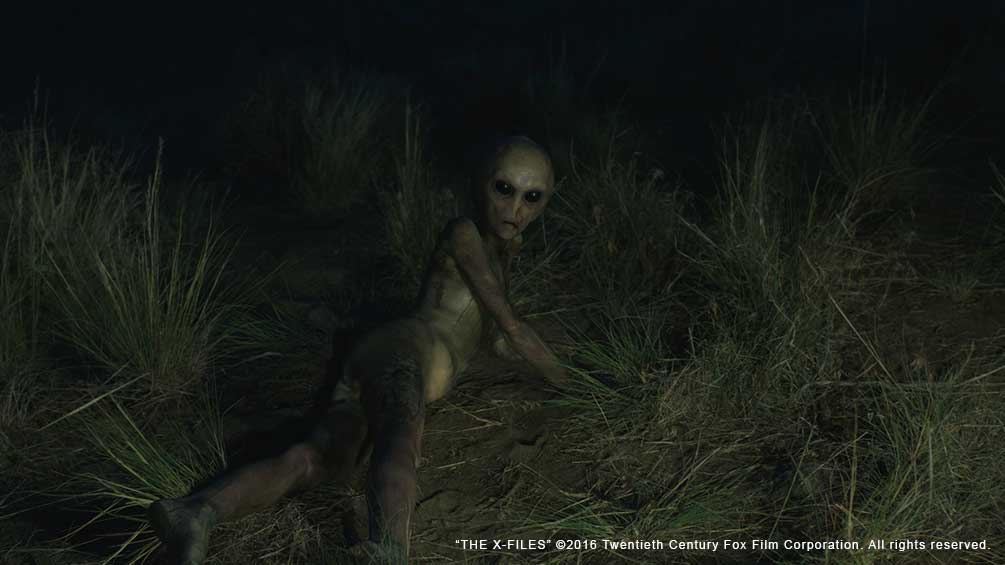
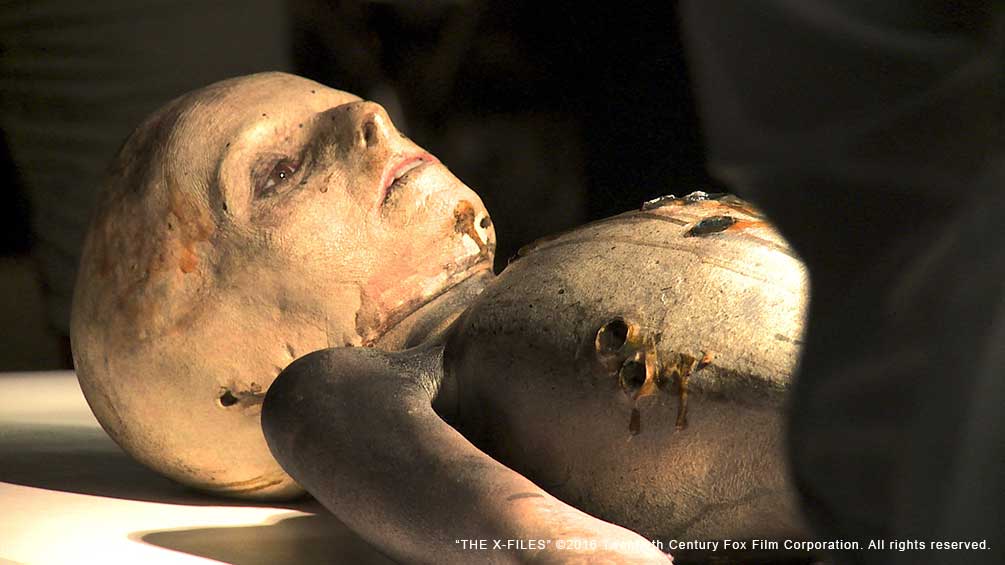
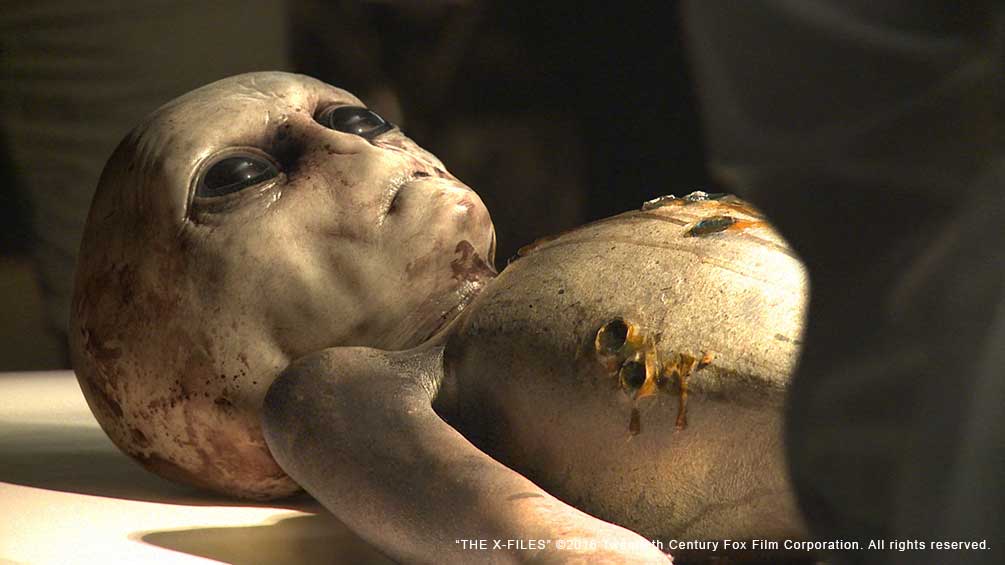
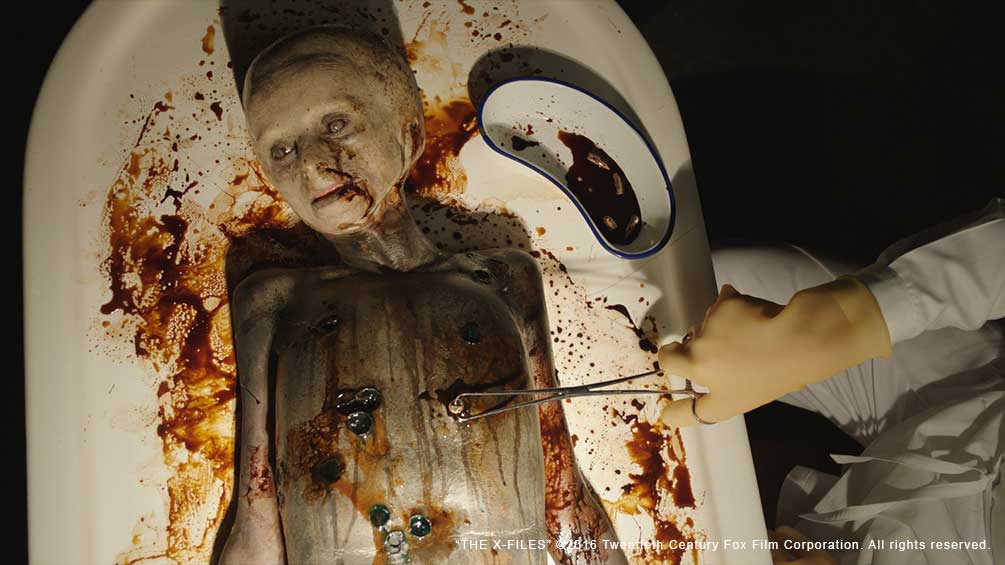

Monstrous effects
Further out-of-this-world effects were required later in the series. In one sequence, the character of Guy Mann’s face morphs into that of a monster, replete with grisly spikes and other protrusions.
Image Engine needed to create a seamless 2D blend for the monster morph, while also capturing an aesthetic that was somewhat reminiscent of the original series.
“The production wanted a somewhat nostalgic feel to it – a kind of 80s monster flick feel that would remind people of the original series,” explains Krentz. “We went with a completely 2D morph and did no 3D look development. That fed into the old school look.
“However, we also put a lot of details into matching exactly where the character’s ears would morph into, and where his eyeline was going to be,” continues Krentz. “Because of this, we were able to add in effects such as horns growing out of the skin as the morph progressed.”
A similar task awaited the team in the opening of the final episode, in which Scully herself transforms into alien form.
“We went full CG for that sequence,” says Krentz. “We received a 3D scan of Gillian Anderson’s head, and then created a blend shape from that to the CG alien head we created for episode one.”
The team went beyond simply performing a linear morph. “We added lots of little effects, like a ripple of ink that passes through Scully’s eyes just before the morph kicks off,” he explains. “It was a fantastic sequence to work on, knowing how much it would mean to diehard fans of the series.”
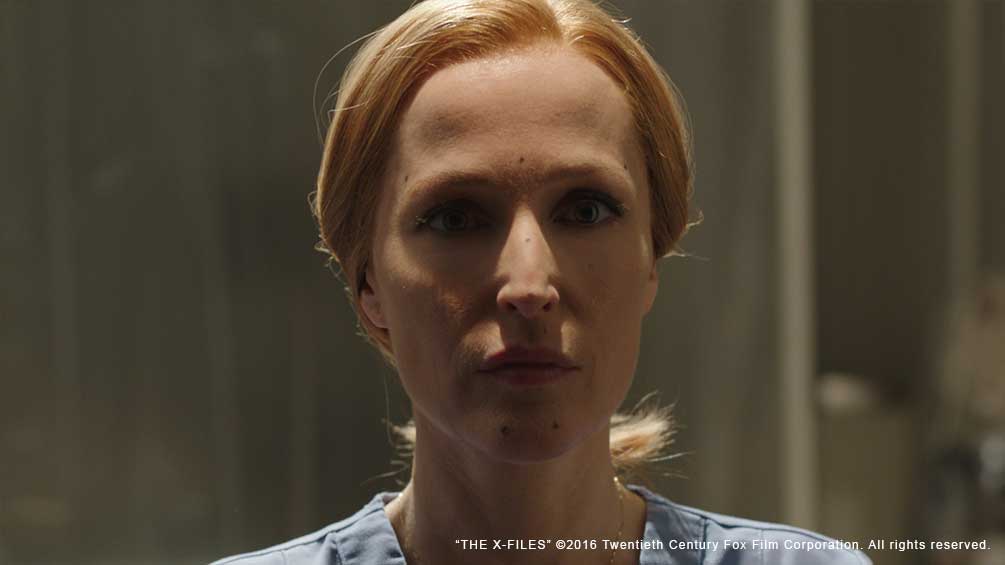

You’re being watched
Episode four presented another standout shot for the Image Engine team: an epic pull-out that starts with Mulder and Scully standing amid a rural landscape, then moves upwards, revealing the surrounding fields and urban sprawls, the skies and atmosphere, and then finally the pale blue dot that is the Earth itself.
“That was a truly epic shot for a television series,” says Davies. “The production filmed the initial plate using a crane, which panned up from David Duchovny and Gillian Anderson. We took over that camera as it pulled out beyond the crane’s height. We the created the Washington DC area and the surrounding states, and then blended that into the continent of North America, and then blended that into a CG model of the Earth with a backdrop of an expansive star field.”
Image Engine enlisted the aid of NASA in order to create the shot, obtaining a high-resolution map of Earth. The details here enabled the team to build a true-to-life atmosphere for the shot.
“Usually people try and make the ocean blue, but in reality it’s black with a blue atmosphere over the top,” says Krentz. “You can get away with it on most shots, but when you’re doing a pullback from Earth, from that close up to that far away, incorrect details like that can really stand out.”
Home-grown approach
From the outer reaches of our atmosphere to somewhere much closer to home – at least for Image Engine – another UFO shot required a Vancouver backdrop to be transformed into Washington DC’s Potomac river.
“This sequence was all shot on the Georgia Viaduct in downtown Vancouver, not far from the Image Engine studio,” says Engelbrecht. “We digitally created almost everything that’s witnessed in shots, from the CG water to the digital Washington D.C. background.”
Image Engine also added a variety of digi-doubles and cars, creating the sense that the bridge was busy with activity.
“The final addition to that scene was the triangular, black spaceships, which we also added to the first episode,” says Engelbrecht. “We added a shard of light penetrating from its center on to the people below. It felt very much like an ‘X-Files moment’.”
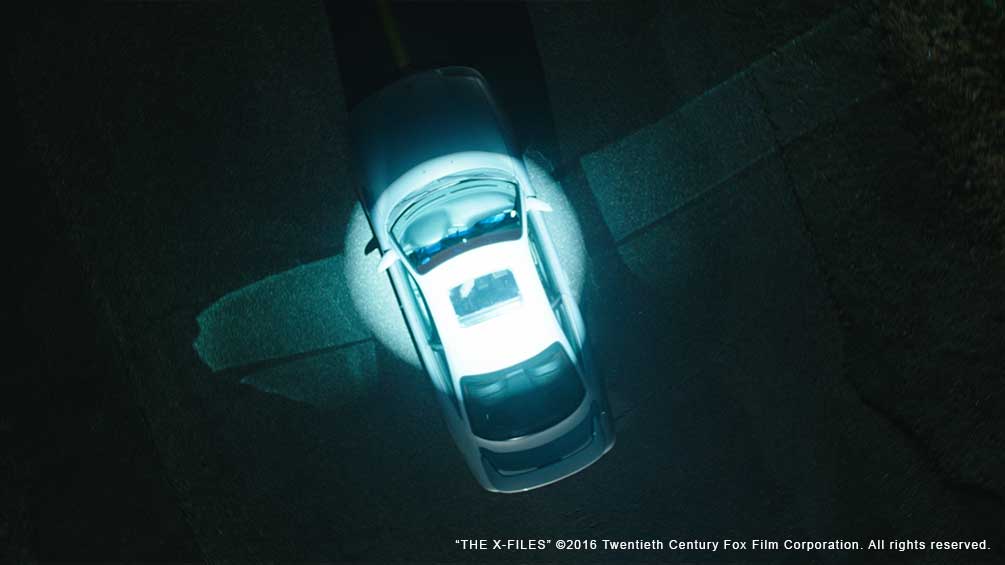
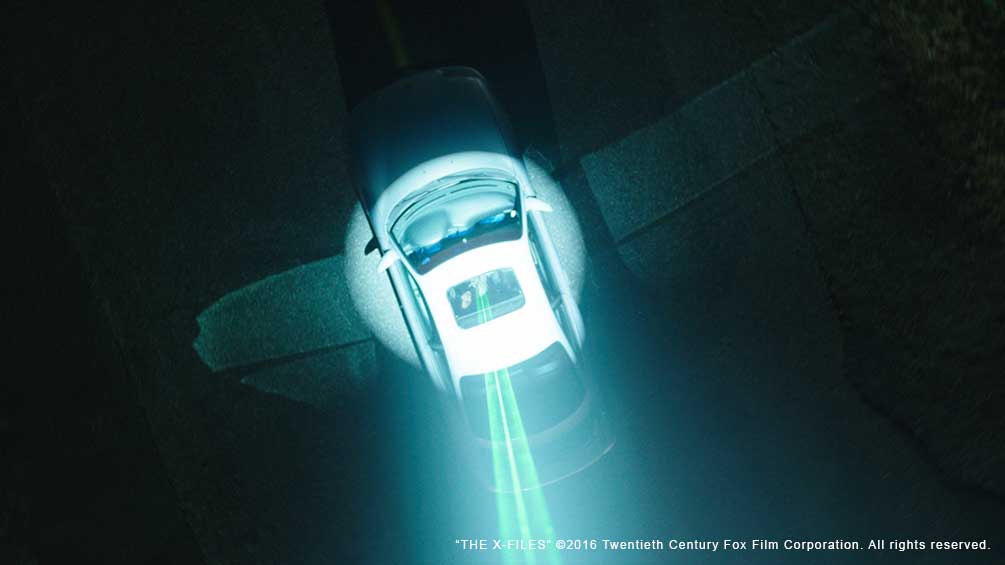

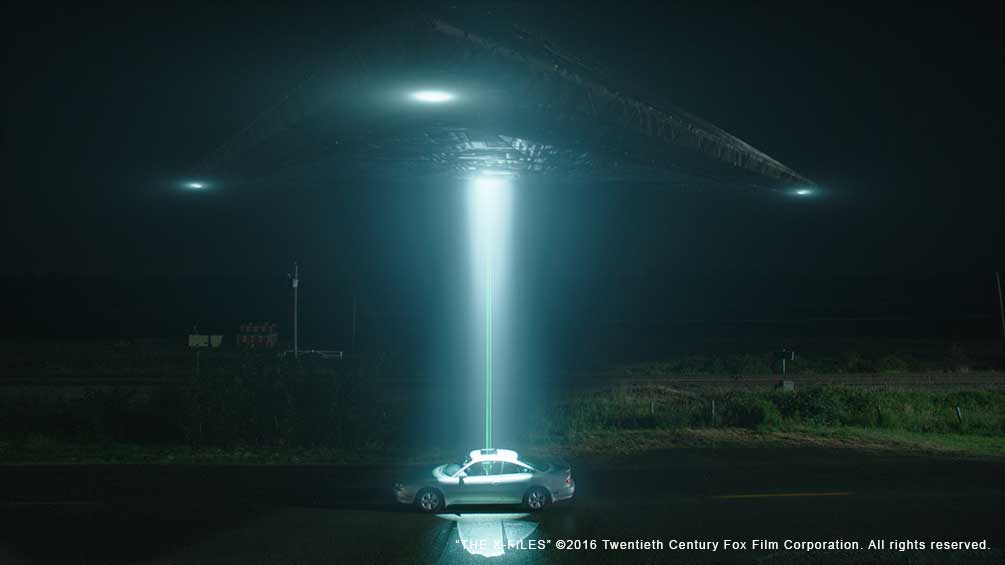
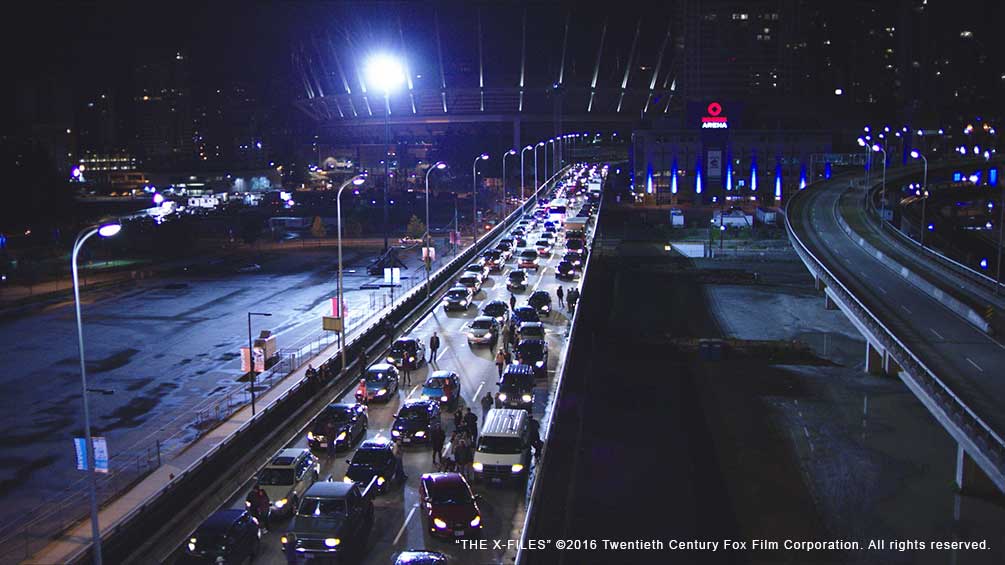

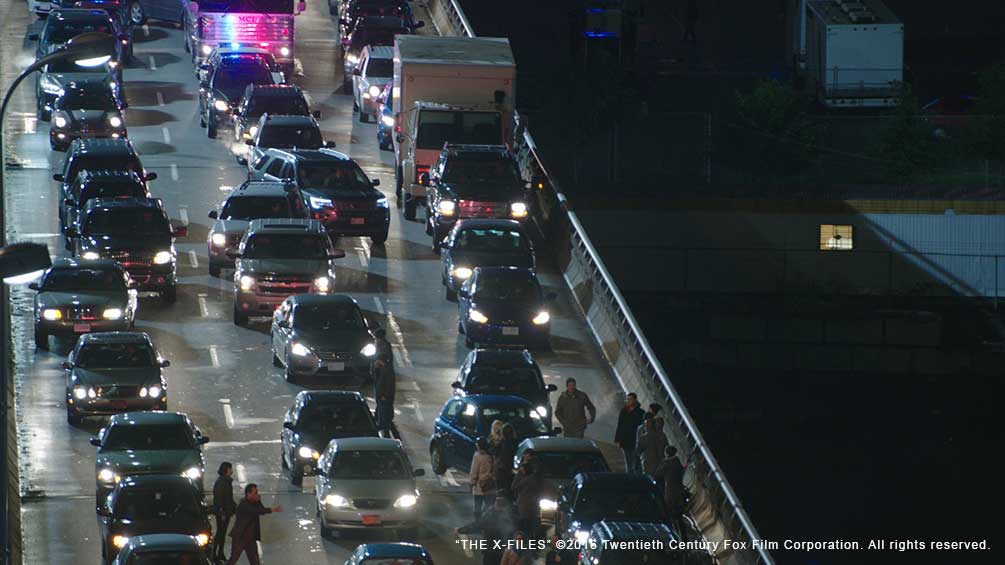
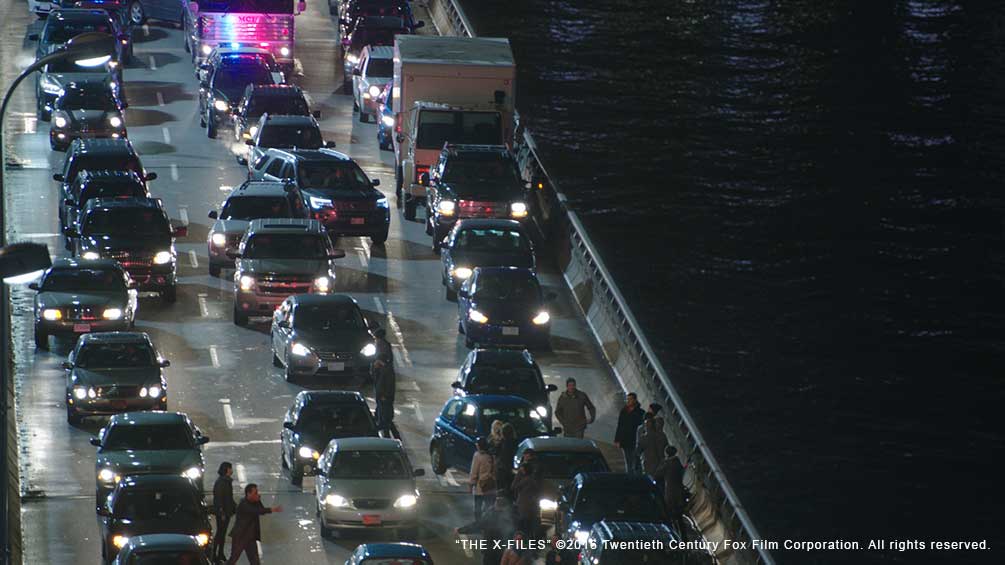

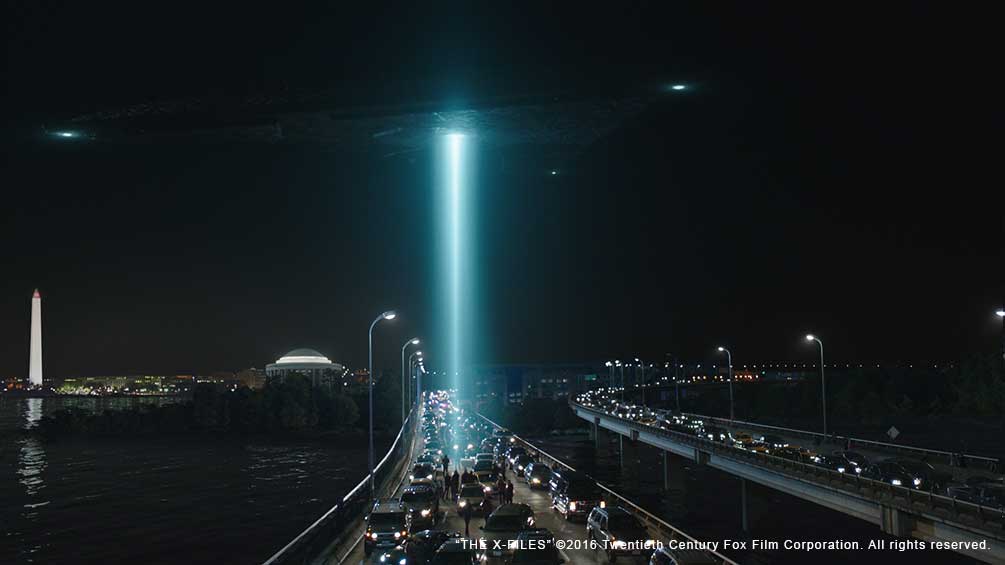
For the fans, by the fans
For shots like these and others – including the creation of a digital flock of some 4,000 crows – the Image Engine team used the same pipeline as it does when working on the world’s largest films. The timescale, however, was typical for TV: short and fast.
“The turnaround times were significantly faster on The X-Files; more like three to four weeks,” says Krentz.
“You need to keep that in mind all the time. You can’t spend a whole lot of time in development, for instance, figuring out how to get the shot. Sometimes you just have to go for it. That’s a challenge, but it’s something we’re very used to now at Image Engine, especially considering our experience on Game of Thrones. We can easily tackle such projects and know we can hit the quality level required.”
For visual effects executive producer Shawn Walsh, the results truly are fantastic: “We’re extremely pleased to have been part of the team that brought this television event to completion,” he concludes “We’re simply thrilled to have created another entry into the famous X-Files canon – it’s got that Vancouver production heritage, not to mention that we all grew up on this stuff!”


